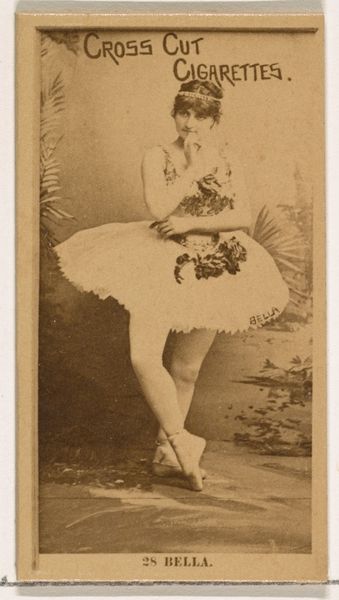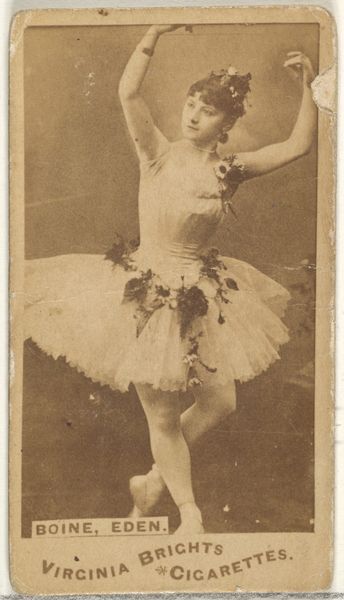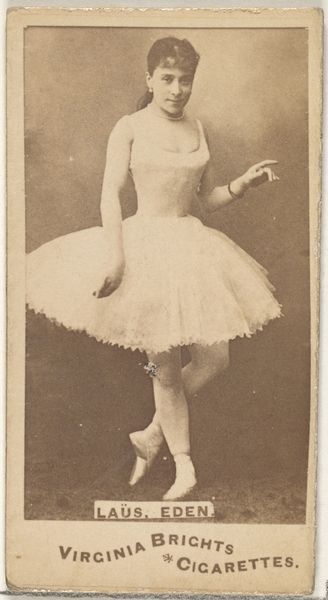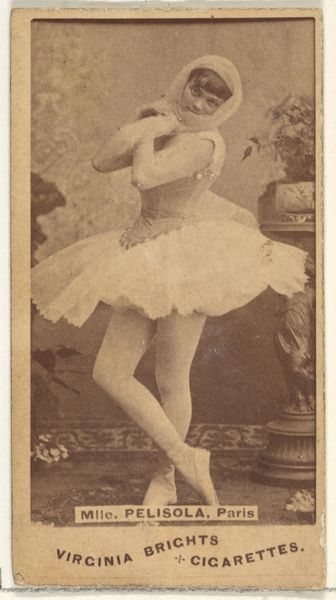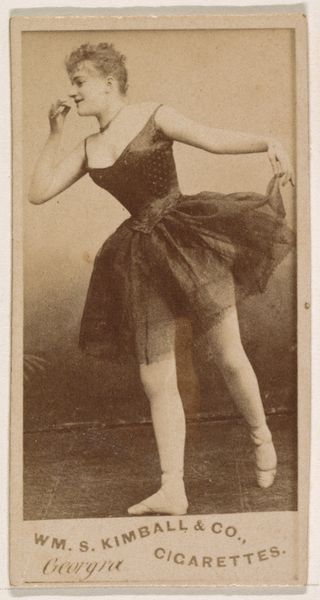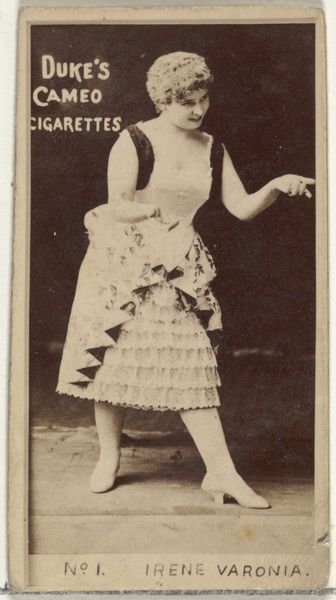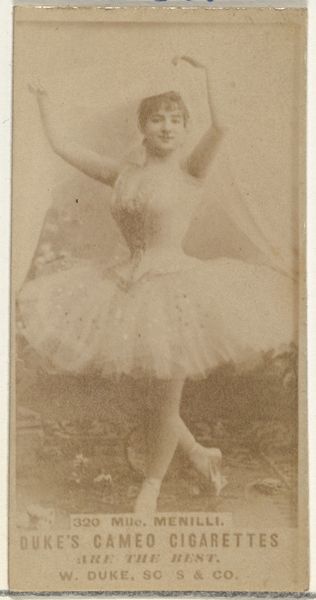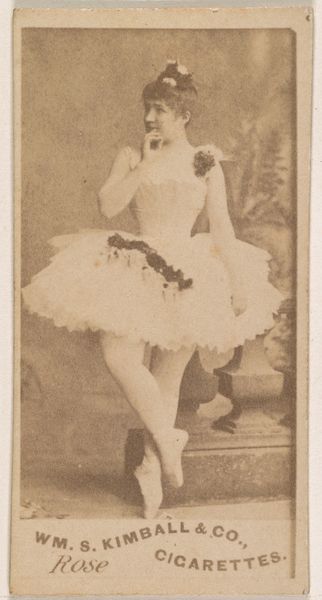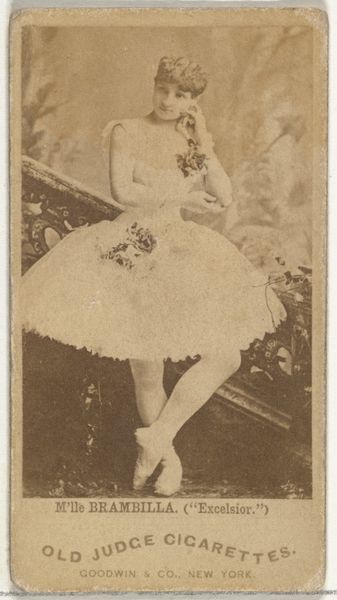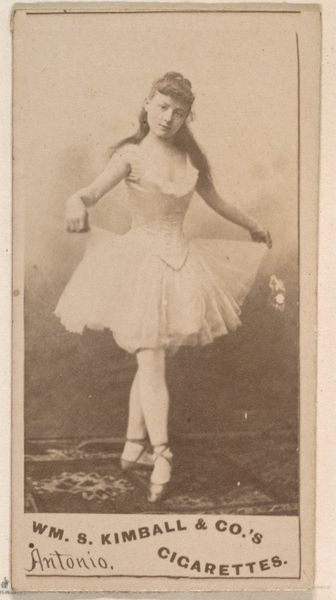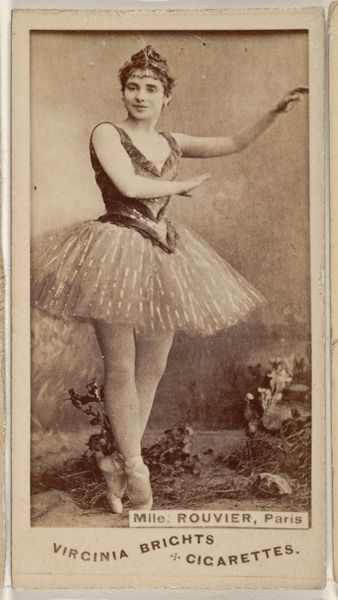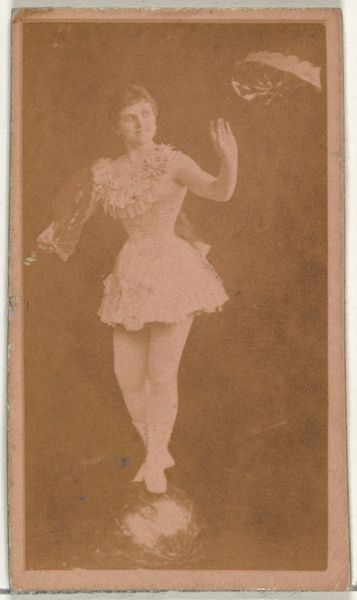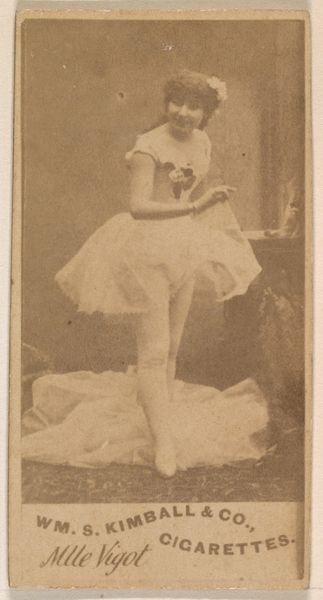
Cornalba, Eden, from the Actors and Actresses series (N45, Type 1) for Virginia Brights Cigarettes 1885 - 1891
0:00
0:00
drawing, print, photography
#
portrait
#
drawing
# print
#
impressionism
#
photography
#
pencil drawing
#
19th century
Dimensions: Sheet: 2 3/4 x 1 3/8 in. (7 x 3.5 cm)
Copyright: Public Domain
Editor: This is "Cornalba, Eden," part of the "Actors and Actresses" series from Allen & Ginter, dating from around 1885 to 1891. It's fascinating to see photography used for advertising like this, especially to sell cigarettes. What stands out to you about it? Curator: It’s crucial to consider how images like this functioned within the late 19th-century consumer economy. This wasn’t "high art" displayed in a gallery; it was mass-produced, circulated, and consumed along with tobacco. What kind of labor went into creating and distributing these cards? Editor: That's an angle I hadn't considered. Who were the people involved beyond Allen & Ginter themselves? Curator: Think about the photographers, the printers, the factory workers assembling the cigarette packs, even the distribution networks reaching consumers. These cards commodified not just the actress, Eden Cornalba, but also a romanticized vision of entertainment itself. Also, what's the significance of using this particular actress? What was her status, and how does that relate to the brand image Virginia Brights sought to project? Editor: It feels almost exploitative to take a person and turn them into a collectible, but then wrap it up in a capitalist incentive. What medium do you see used for the figures? Is that even drawing or something else? Curator: Indeed. The reproductive process, the labor involved, and the eventual discarding of the cards all contribute to its meaning. Even the act of collecting becomes part of this circuit of production and consumption. Think about the photographic process itself – the chemical reactions, the paper, the ink. Each element tells a story about the material conditions of its creation. Editor: I never would have thought about it that way. Thanks to that, I think I will be spending a lot more time observing the methods by which a work has been brought to creation. Curator: Exactly. Analyzing its composition enables understanding its historical context.
Comments
No comments
Be the first to comment and join the conversation on the ultimate creative platform.
